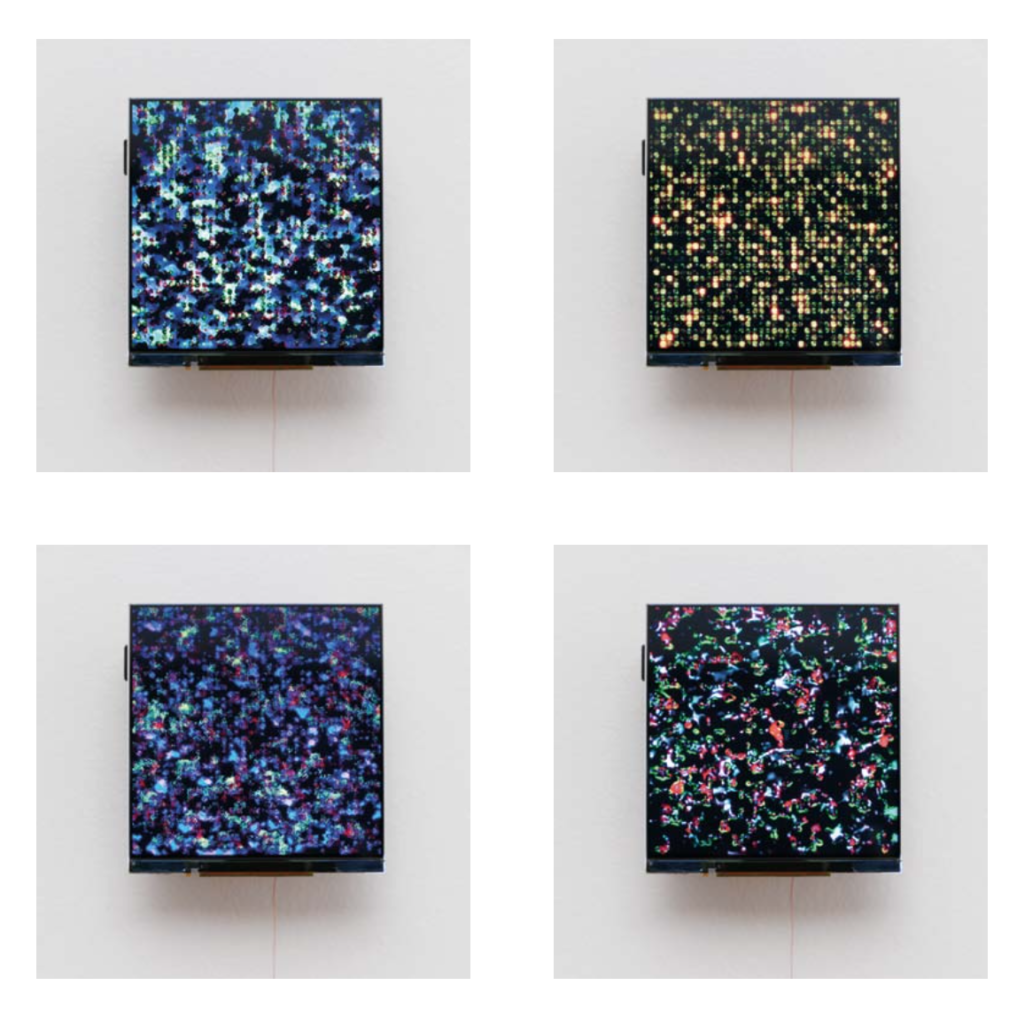

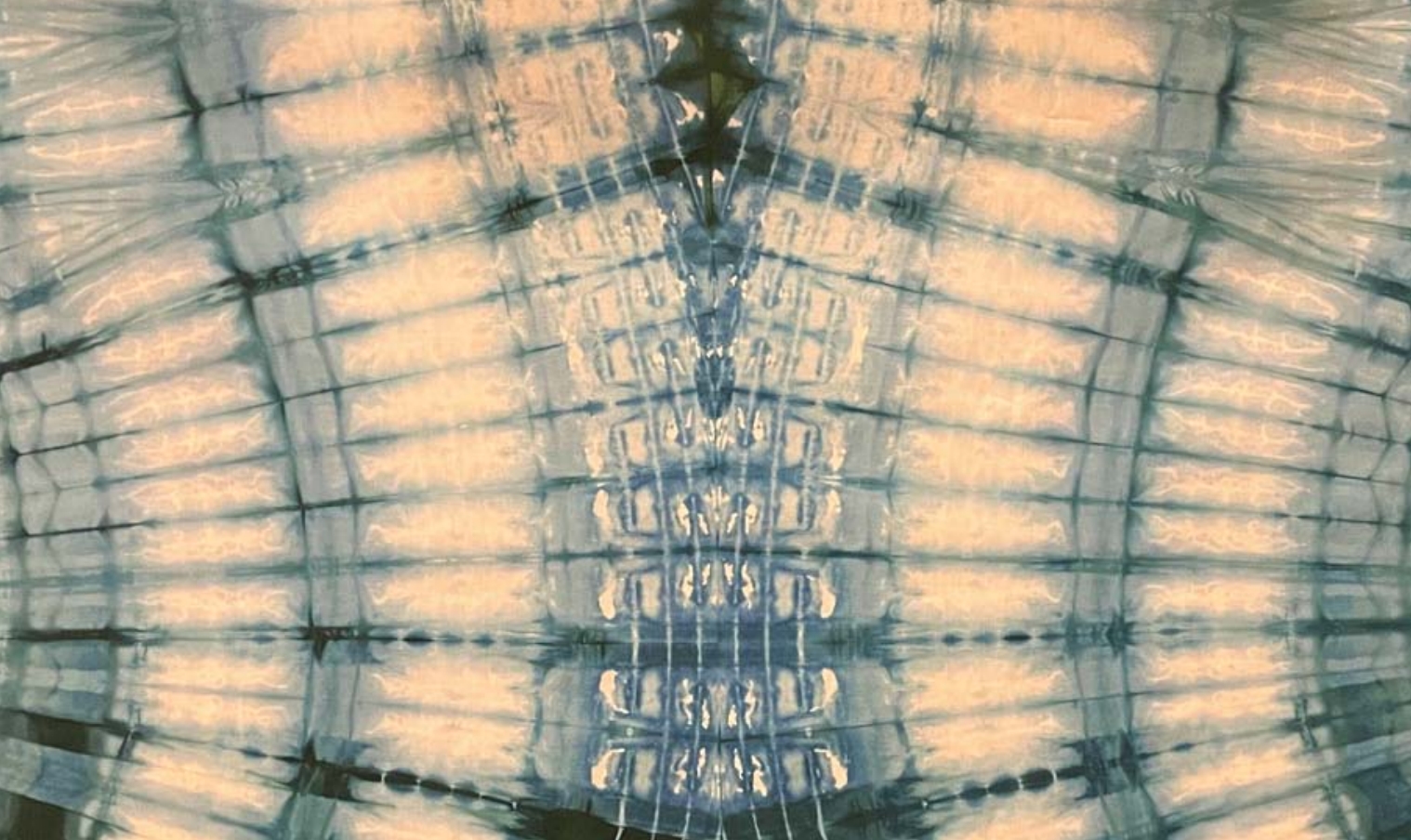

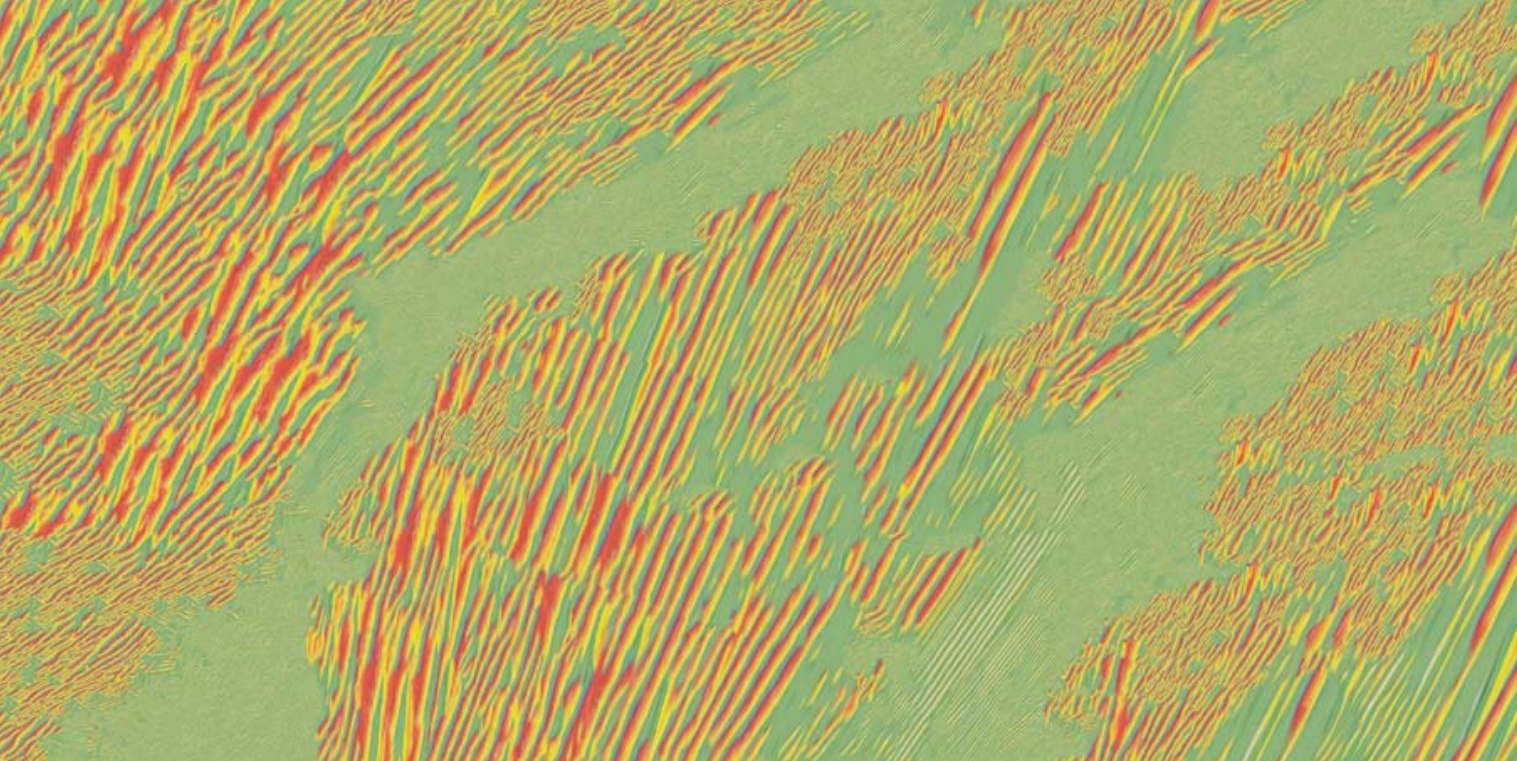
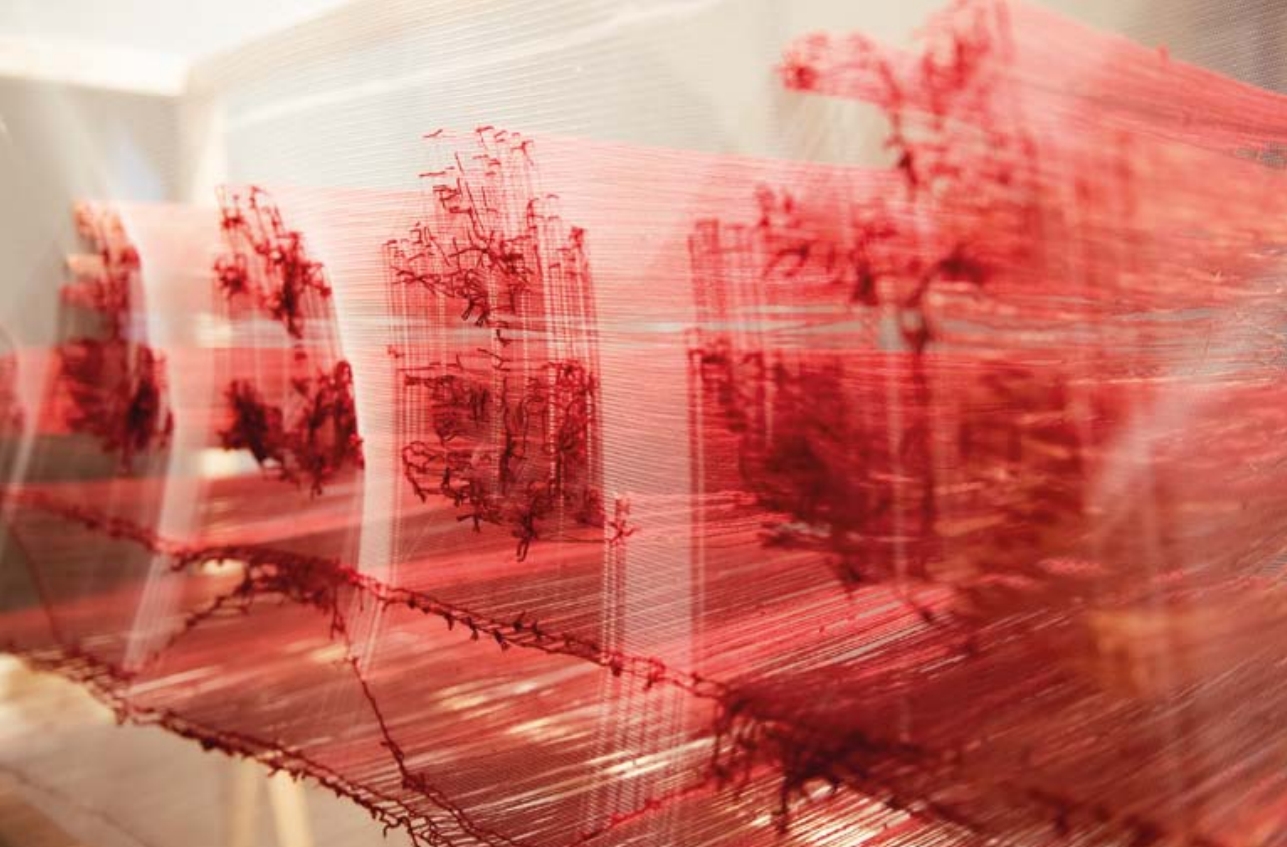
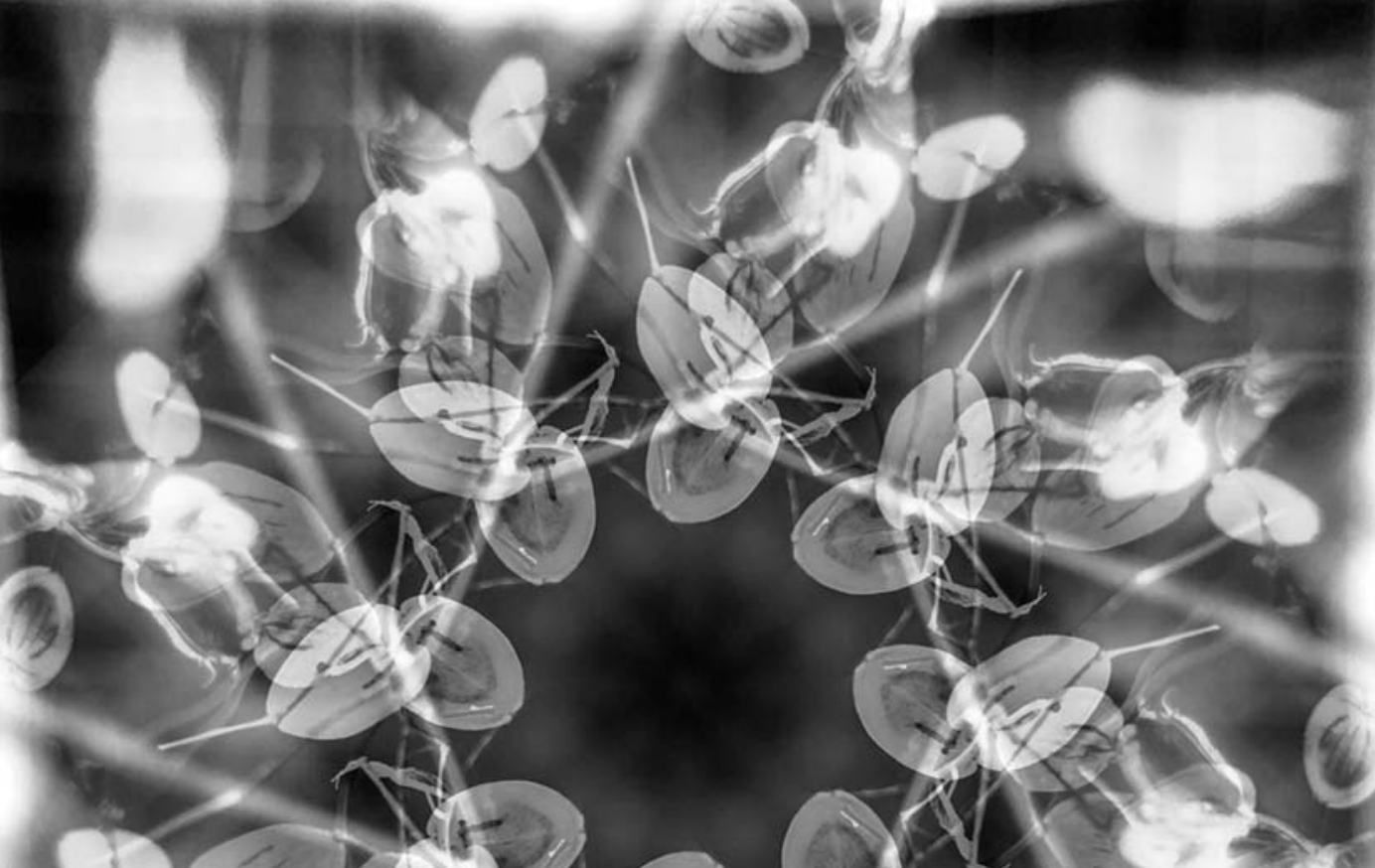
Fantôme fragile
Autor | artist | Autor: Thomas Scheffer (1965)
miejsce | place | Ort: Galerie www, Görlitzer Straße 17, Frankfurt (Oder)
Niefiguratywny, elektroniczny obraz ruchomy w Fantôme fragile obrazuje kruchość naszej poznawczo-duchowej egzystencji.
Fantôme fragile warunkuje indywidualną, autorefleksyjną odpowiedź typu „bodziec-reakcja” na ruchomy obraz i własne działanie odbiorcy lub reakcję w procesie postrzegania.
W ten sposób przechylenie głowy powoduje obrót obrazu, zmniejszenie odległości oczu od powierzchni ekranu – jego powiększenie, a przyglądanie się z boku – percepcję kierunku płynięcia elementów.
Jeśli widz zsynchronizuje się z obrazem i odbierze go w ruchu, stanie się zarówno autorem, jak i widzem swojego „ja” tu i teraz, niejako wrzuconym z powrotem w poznawcze potencjały własnego ciała i jego biochemiczne uwarunkowania.
W trudnym do zrozumienia, dyskursywnym krajobrazie wirtualności ważne wydaje się ponowne ustalenie, gdzie zaczynają się i kończą fenomenalne rzeczywistości.
The nonfigurative electronic moving image in Fantôme fragile illustrates the fragility of our cognitive-spiritual existence.
Fantôme fragile asks for the recipient’s individual, auto-reflexive stimulus reaction response to the moving image and to his or her own action or reaction during the perception process.
Tilting the head causes the image to rotate, reducing the distance between the eyes and the screen surface causes a zoom, and looking sideways results in perceiving the flow of the elements.
If the viewer synchronizes with the picture and perceives it in motion, he becomes – here and now – simultaneously the author and spectator of himself. It is as if the viewer was reduced to the cognitive potential of his own body and its biochemical limitations.
In the extremely complex discourse of virtuality, it seems important to determine again where phenomenal realities begin and end.
Das nonfigurative elektronische Bewegtbild in Fantôme fragile verdeutlicht die Fragilität unserer kognitiv-geistigen Existenz.
Fantôme fragile bedingt die individuelle, auto-reflexive Reizreaktionsantwort des Rezipienten auf das Bewegtbild und seiner eigenen Aktion bzw. Reaktion während des Wahrnehmungsprozesses.
So bewirkt das Kippen des Kopfes ein Drehen des Bildes, ein Verringern des Abstands zwischen Augen und Bildschirmoberfläche einen Zoom, seitliches Betrachten die Perzeption der Fließrichtung der Elemente.
Synchronisiert sich der Betrachter mit dem Bild und rezipiert er es in Bewegung, wird er sowohl zum Autor, als auch zum Betrachter seines Selbst im Hier und Jetzt und gleichsam zurückgeworfen auf die kognitiven Potentiale seines eigenen Körpers und dessen bio-chemische Bedingtheit.
In der schwer verständlichen Diskurslandschaft des Virtuellen erscheint es wichtig, erneut festzustellen, wo phänomenale Realitäten beginnen und enden.
